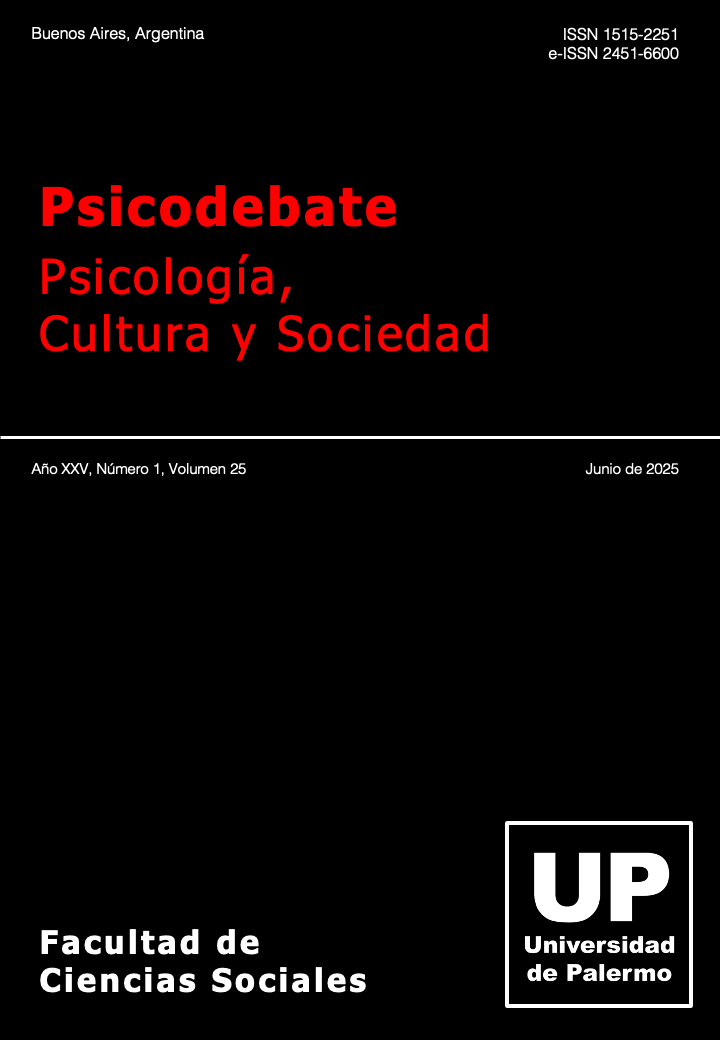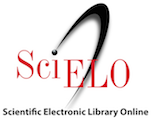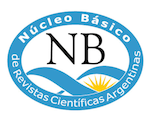Un nuevo paradigma experimental para resolver un viejo problema: ¿Recupera nuestra memoria con mayor facilidad análogos distantes o símiles superficiales?
Resumen
Los estudios tradicionales de laboratorio muestran que los ítems de la memoria de largo plazo que comparten entidades y acciones aisladas con ítems de la memoria de trabajo (símiles superficiales) se recuperan más fácilmente que aquellos que comparten solo un sistema de relaciones abstractas (análogos distantes). Los estudios naturalistas más recientes muestran sin embargo resultados exactamente opuestos. En este trabajo buscamos resolver esta paradoja a través de un paradigma que combina la validez ecológica de los estudios naturalistas con el control metodológico de los experimentales. Presentamos a los participantes una historia que mantenía similitudes superficiales con una película popular y similitudes estructurales con otra. A través de este método retuvimos del enfoque naturalista el trabajo con análogos base procesados en profundidad, así como la separación contextual y temporal entre la fase de aprendizaje y la de recuperación. A su vez, conservamos del enfoque de laboratorio la equiprobabilidad de recuperar análogos distantes y símiles superficiales, así como la posibilidad de distinguir entre análogos recuperados de inventados. Los resultados mostraron que los símiles superficiales se recuperan en mucha mayor medida que los análogos distantes, sugiriendo que nuestra memoria no se ajusta a un diseño ideal de búsqueda de información.
Descargas
Citas
Bernardo, A. B. I. (2001). Analogical problem construction and transfer in mathematical problem solving. Educational Psychology, 21(2), 137–150. https://doi.org/10.1080/01443410020043841
Blanchette, I., & Dunbar, K. (2000). How analogies are generated: The roles of structural and superficial similarity. Memory & Cognition, 28(1), 108–124. https://doi.org/10.3758/BF03211580
Blanchette, I., & Dunbar, K. (2001). Analogy use in naturalistic settings: The influence of audience, emotion, and goals. Memory & Cognition, 29(5), 730–735. https://doi.org/10.3758/BF03200475
Catrambone, R. (2002). The effects of surface and structural feature matches on the access of story analogs. Journal of Experimental Psychology: Learning, Memory, and Cognition, 28(2), 318–334. https://doi.org/10.1037/0278-7393.28.2.318
Catrambone, R., & Holyoak, K. J. (1989). Overcoming contextual limitations on problem-solving transfer. Journal of Experimental Psychology: Learning, Memory, and Cognition, 15(6), 1147–1156. https://doi.org/10.1037/0278-7393.15.6.1147
Christensen, B. T., & Schunn, C. D. (2007). The relationship of analogical distance to analogical function and preinventive structure: The case of engineering design. Memory & Cognition, 35(1), 29–38. https://doi.org/10.3758/BF03195939
Day, S. B., & Goldstone, R. L. (2012). The import of knowledge export: Connecting findings and theories of transfer of learning. Educational Psychologist, 47(3), 153–176. https://doi.org/10.1080/00461520.2012.696438
Don H. J., Goldwater M. B., & Livesey E. J. (2023) Cognition of relational discovery: Why it matters for effective far transfer and effective education? Frontiers in Psychology. https://doi.org/10.3389/fpsyg.2023.957517
Dunbar, K. (2001). The analogical paradox: Why analogy is so easy in naturalistic settings, yet so difficult in the psychology laboratory? In D. Gentner, K. J. Holyoak, & B. Kokinov (Eds.), The analogical mind: Perspectives from cognitive science (pp. 313–334). The MIT Press. https://doi.org/10.7551/mitpress/1251.003.0013
Faul, F., Erdfelder, E., Lang, A. G., & Buchner, A. (2007). G*Power: A flexible statistical power analysis program for the social, behavioral, and biomedical sciences. Behavior Research Methods, 39(2), 175–191. https://doi.org/10.3758/BF03193146
Gentner, D. (1983). Structure-mapping: A theoretical framework for analogy. Cognitive Science, 7, 155–170. https://doi.org/10.1016/ S0364-0213(83)80009-3
Gentner, D. (1989). The mechanisms of analogical transfer. In S. Vosniadou & A. Ortony (Eds.), Similarity and analogical reasoning (pp. 199–242). Cambridge University Press. https://doi.org/10.1017/CBO9780511529863.011
Gentner, D., Loewenstein, J., Thompson, L., & Forbus, K. (2009) Reviving inert knowledge: Analogical abstraction supports relational retrieval of past events. Cognitive Science, 33, 1343-1382. https://doi.org/10.1111/j.1551-6709.2009.01070.x
Gentner, D., & Maravilla, F. (2018). Analogical reasoning. In L. J. Ball & V. A. Thompson (eds.), International Handbook of Thinking & Reasoning (pp. 186-203). Psychology Press.
Gentner, D., & Smith, L. A. (2013). Analogical learning and reasoning. In D. Reisberg (Ed.), The Oxford handbook of Cognitive Psychology (pp. 668-681). Oxford University Press. https://doi.org/10.1093/oxfordhb/9780195376746.013.0042
Gentner, D., Rattermann, M. J., & Forbus, K. D. (1993). The roles of similarity in transfer: Separating retrievability from inferential soundness. Cognitive Psychology, 25(4), 431-467. https://doi.org/10.1006/cogp.1993.1013
Gick, M. L., & Holyoak, K. J. (1983). Schema induction and analogical transfer. Cognitive Psychology, 15(1), 1–38. https://doi.org/10.1016/0010-0285(83)90002-6
Goldwater, M. B., Gentner, D., LaDue, N. D., & Libarkin, J. C. (2021). Analogy generation in science experts and novices. Cognitive Science, 45(9). https://doi.org/10.1111/cogs.13036
Hofstadter, D. R., & Sander, E. (2013). Surfaces and essences: Analogy as the fuel and fire of thinking. Basic Books.
Holyoak, K. J. (1984). Mental models in problem solving. In J. R. Anderson & S. M. Kosslyn (Eds.), Tutorials in learning and memory: Essays in honor of Gordon Bower (pp. 193-218). W.H. Freeman.
Holyoak, K. J. (2012). Analogy and relational reasoning. In K. J. Holyoak & R. G. Morrison (Eds.), The Oxford handbook of thinking and reasoning (pp. 234-259). Oxford University Press. https://doi.org/10.1093/oxfordhb/9780199734689.013.0013
Holyoak, K. J. (2025). The human edge: Analogy and the roots of creative intelligence. The MIT Press. https://doi.org/10.7551/mitpress/4549.001.0001
Holyoak, K. J., & Thagard, P. R. (1995). Mental leaps: Analogy in creative thought. MIT Press.
Hummel, J. E., & Holyoak, K. J. (1997). Distributed representations of structure: A theory of analogical access and mapping. Psychological Review, 104(3), 427-466 https://doi.org/10.1037/0033-295X.104.3.427
Jamrozik, A., & Gentner, D. (2020). Relational labeling unlocks inert knowledge. Cognition, 196, 104146. https://doi.org/10.1016/j. cognition.2019.104146.
Kurtz, K. J., & Honke, G. (2020). Sorting out the problem of inert knowledge: Category construction to promote spontaneous transfer. Journal of Experimental Psychology: Learning, Memory, and Cognition, 46, 803–821. https://doi.org/10.1037/xlm0000750
Marcus, G. (2009). How does the mind work? Insights from biology. Topics in Cognitive Science, 1(1), 145–172. https://doi.org/10.1111/j.1756-8765.2008.01007.x
Minervino, R. A., Olguín, V., & Trench, M. (2017). Promoting interdomain analogical transfer: When creating a problem helps to solve a problem. Memory & Cognition, 45(2), 221–232. https://doi.org/10.3758/s13421-016-0655-2
Minervino, R. A. & Trench, M. (2024). Surface matches prevail over distant analogs during retrieval. Memory & Cognition, 1-17. https://doi.org/10.3758/s13421-024-01605-9
Olguín, M. V., Tavernini, L. M., Trench, M., & Minervino, R. A. (2022). The effect of surface similarities on the retrieval of analogous daily-life events. Memory & Cognition, 50, 1399–1413. https://doi.org/10.3758/s13421-022-01279-1
Olguín, M. V., Trench, M. & Minervino, R. (2017) Attending to individual recipients' knowledge when generating persuasive analogies. Journal of Cognitive Psychology, 29(6), 755-768. https://doi.org/10.1080/20445911.2017.1304942.
Popov, V., Hristova, P., & Anders, R. (2017). The relational luring effect: Retrieval of relational information during associative recognition. Journal of Experimental Psychology: General, 146(5), 722–745. https://doi.org/10.1037/xge0000305
Raynal, L., Clément, E., & Sander, E. (2018). Structural similarity superiority in a free-recall reminding paradigm. In C. Kalish, M. Rau, T. Rogers, & J. Zhu (Eds.), Proceedings of the 40th Annual Meeting of the Cognitive Science Society (pp. 2327-2332). Cognitive Science Society.
Raynal, L., Clement, E., & Sander, E. (2020). Are superficially dissimilar analogs better retrieved than superficially similar disanalogs? Acta Psychologica, 203, 102989. https://doi.org/10.1016/j.actpsy.2019.102989.
Ross, B. H., & Kennedy, P. T. (1990). Generalizing from the use of earlier examples in problem solving. Journal of Experimental Psychology: Learning, Memory, and Cognition, 16, 42-55. https://doi. org/10.1037/0278-7393.16.1.42
Schacter, D. L. (1999). The seven sins of memory: Insights from psychology and cognitive neuroscience. American Psychologist, 54(3), 182–203. https://doi.org/10.1037/0003-066X.54.3.182
Schacter, D. L. (2021). The seven sins of memory: an update. Memory, 30(1), 37-42. https://doi.org/10.1080/09658211.2021.1873391
Snoddy, S., & Kurtz, K. J. (2021). Preventing inert knowledge: Category status promotes spontaneous structure-based retrieval of prior knowledge. Journal of Experimental Psychology: Learning, Memory, and Cognition, 47(4), 571–607. https://doi.org/10.1037/xlm0000974
Trench, M. (2014). Explaining the abundance of distant analogies in naturalistic observations of experts. Frontiers in Psychology, 5,1487. https://doi.org/10.3389/fpsyg.2014.01487
Trench, M., & Minervino, R. A. (2015). The role of surface similarity in analogical retrieval: Bridging the gap between the naturalistic and the experimental traditions. Cognitive Science, 39(6), 1292–1319. https://doi.org/10.1111/cogs.12201
Trench, M., & Minervino, R. A. (2017). Cracking the problem of inert knowledge: Portable strategies to access distant analogs from memory. In B. H. Ross (Ed.), The psychology of learning and motivation (Vol. 66, pp. 1–41). Academic Press. https://doi.org/10.1016/bs.plm.2016.11.001
Trench, M., & Minervino, R. A. (2020). Distant connections: The memory basis of creative analogy. Springer. https://doi.org/10.1007/978-3-030-52545-3
Trench, M., Olguín, V., & Minervino, R. (2016). Seek, and ye shall find: Differences between spontaneous and voluntary analogical retrieval. The Quarterly Journal of Experimental Psychology, 69(4), 698–712. https://doi.org/10.1080/17470218.2015.1044543
Trench, M., Tavernini, L. M., & Goldstone, R. L. (2023). Promoting spontaneous analogical transfer by idealizing target representations. Memory & Cognition, 51(7), 1497–1510. https://doi.org/10.3758/s13421-023-01411-9
Trench, M., Tavernini, L. M., & Minervino, R. A. (2025). Accessing distant analogs over surface matches: How efficient is our retrieval system? The Quarterly Journal of Experimental Psychology, Advance online publication. https://doi.org/10.1177/17470218241308032
Wharton, C. M., Holyoak, K. J., & Lange, T. E. (1996). Remote analogical reminding. Memory & Cognition, 24(5), 629–643. https://doi.org/10.3758/BF03201088
Whitehead, A. N. (1929). The aims of education and other essays. Macmillan.
Derechos de autor 2025 Psicodebate

Esta obra está bajo licencia internacional Creative Commons Reconocimiento 4.0.
Los autores/as que publiquen en esta revista ceden los derechos de autor y de publicación a Psicodebate y aceptan el registro de su trabajo bajo una licencia de atribución de Creative Commons, que permite a terceros utilizar lo publicado siempre que de el crédito pertinente a los autores y a Psicodebate

















